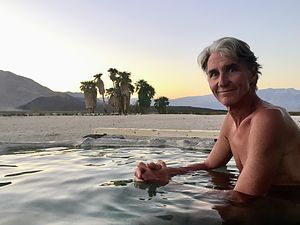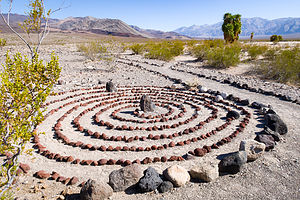- Home
- About
- Map
- Trips
- Bringing Boat West
- Migration West
- Solo Motorcycle Ride
- Final Family XC Trip
- Colorado Rockies
- Graduates' XC Trip
- Yosemite & Nevada
- Colorado & Utah
- Best of Utah
- Southern Loop
- Pacific Northwest
- Northern Loop
- Los Angeles to NYC
- East Coast Trips
- Martha's Vineyard
- 1 Week in Quebec
- Southeast Coast
- NH Backpacking
- Martha's Vineyard
- Canadian Maritimes
- Ocracoke Island
- Edisto Island
- First Landing '02
- Hunting Island '02
- Stowe in Winter
- Hunting Island '01
- Lake Placid
- Chesapeake
- Provincetown
- Hunting Island '00
- Acadia in Winter
- Boston Suburbs
- Niagara Falls
- First Landing '99
- Cape Hatteras
- West Coast Trips
- Burning Man
- Utah Off-Roading
- Maui
- Mojave 4WD Course
- Colorado River Rafting
- Bishop & Death Valley
- Kauai
- Yosemite Fall
- Utah Off-Road
- Lost Coast
- Yosemite Valley
- Arizona and New Mexico
- Pescadero & Capitola
- Bishop & Death Valley
- San Diego, Anza Borrego, Joshua Tree
- Carmel
- Death Valley in Fall
- Yosemite in the Fall
- Pacific Northwest
- Utah Off-Roading
- Southern CA Deserts
- Yosemite & Covid
- Lake Powell Covid
- Eastern Sierra & Covid
- Bishop & Death Valley
- Central & SE Oregon
- Mojave Road
- Eastern Sierra
- Trinity Alps
- Tuolumne Meadows
- Lake Powell Boating
- Eastern Sierra
- Yosemite Winter
- Hawaii
- 4WD Eastern Sierra
- 4WD Death Valley +
- Southern CA Deserts
- Christmas in Tahoe
- Yosemite & Pinnacles
- Totality
- Yosemite & Sierra
- Yosemite Christmas
- Yosemite, San Diego
- Yosemite & North CA
- Seattle to Sierra
- Southwest Deserts
- Yosemite & Sierra
- Pacific Northwest
- Yosemite & South CA
- Pacific Northwest
- Northern California
- Southern Alaska
- Vancouver Island
- International Trips
- Index
- Tips
- Books
- Photos/Videos
- Search
- Contact
Death Valley - Saline Valley Warm Springs, CA
Tuesday, September 19, 2017 - 9:15am by Lolo
70 miles and 4.5 hours from our last stop - 1 night stay
Travelogue
 Palm Oasis shady poolEver since we visited the Saline Valley Warm Springs a few months back, Herb had wanted to get back to it, as he loves nothing better than a natural hot spring surrounded by incredible scenery. I do too, but last time we were here, I found the community that has set up a semi-permanent camp here, a little too weird and cultish for my taste. Also, it was the worse night of camping we had ever experienced. Fierce winds that sounded like an approaching jet practically blew our tent away, and Herb spent the entire night battling the wild burros that kept rummaging through our stuff. Now that we had a hard, burro-proof shell around us, we were willing to give it another try.
Palm Oasis shady poolEver since we visited the Saline Valley Warm Springs a few months back, Herb had wanted to get back to it, as he loves nothing better than a natural hot spring surrounded by incredible scenery. I do too, but last time we were here, I found the community that has set up a semi-permanent camp here, a little too weird and cultish for my taste. Also, it was the worse night of camping we had ever experienced. Fierce winds that sounded like an approaching jet practically blew our tent away, and Herb spent the entire night battling the wild burros that kept rummaging through our stuff. Now that we had a hard, burro-proof shell around us, we were willing to give it another try.
There were two options for getting to the springs from the Racetrack. The most direct route was Lippincott Road, but both the Ranger and the guide books definitely warned against it, as it is the most extreme road in the Park.
 Abandoned vehicle at Goldbelt mine camp along Hidden Valley RoadInstead of a 10-mile, death defying drive, we headed back to Teakettle Junction to take the Hidden Valley Road up over Hunter Mountain to Saline Valley Road and then up to the warm springs.
Abandoned vehicle at Goldbelt mine camp along Hidden Valley RoadInstead of a 10-mile, death defying drive, we headed back to Teakettle Junction to take the Hidden Valley Road up over Hunter Mountain to Saline Valley Road and then up to the warm springs.
About a mile past Teakettle Junction, we entered Lost Burro Gap, a narrow canyon connecting Racetrack Valley with Hidden Valley. At the Lost Burro junction we continued on Hunter Mountain Road for about 11 miles until we came to a sign for the Goldbelt Spur Road to an old abandoned mining camp less than a mile away.
We decided to take the detour to check it out. As with many mining towns, this one had a few lives before finally dying out for good in the 1960s. All that remains are a few collapsed cabins, miscellaneous junk, and an old truck.
Although we knew we were only about a mile from Hunter Mountain Road, we had a tough time finding it again as our GPS kept directing us to roads that no longer existed. Finally, we found our way back to the road and continued up and over the east face of Hunter Mountain eventually reaching the junction with the Saline Valley Road.
 I think we're in the right placeFrom there we traveled north for about 20 miles to the turnoff for Lower Warm Spring Road. To be exact, it was 19.4 miles, and I carefully tracked that because the turnoff is not obvious at all. From there, it’s about 6 miles to the first oasis.
I think we're in the right placeFrom there we traveled north for about 20 miles to the turnoff for Lower Warm Spring Road. To be exact, it was 19.4 miles, and I carefully tracked that because the turnoff is not obvious at all. From there, it’s about 6 miles to the first oasis.
Anyone unsure if they are on the right road to the springs will have no doubt when at about the 4 mile point they come across a tall post with metal bats hanging from it. As we learned last time, bats are a commonly-used motif in the Saline Valley community.
At about 6.5 miles, we arrived at the first oasis, where we had camped on our previous visit. Surprisingly, it was so quiet compared to last time. I think things don’t really get going in this place until October, because September is still considered too hot.
Having bad recollections from last time, we decided to continue on for another mile to the second oasis, which had two beautiful pools - one out in the open, hot desert sun, and the other tucked under the shade of a palm tree. There was absolutely no one there, so we decided to stay for the night.
 Palm Oasis sunny poolDespite the absence of people, the camp was still amazingly well maintained and stocked with supplies. The outdoor shower had soap and shampoo, and the bathroom was stocked with Costco size toilet paper packages, cleaning products, air fresheners, etc.
Palm Oasis sunny poolDespite the absence of people, the camp was still amazingly well maintained and stocked with supplies. The outdoor shower had soap and shampoo, and the bathroom was stocked with Costco size toilet paper packages, cleaning products, air fresheners, etc.
We spent the rest of the day enjoying Paradise where the only stress is deciding whether to soak in the sunny or the shady pool. We did both.
Herb would have gladly stayed a week, but I get antsy after 24 hours of total non-activity in hot desert sun. So much to his chagrin, the next morning we packed up and headed out.
Rumor had it that the Death Valley / Big Pine Road west of Saline Valley Road was open again, so rather than take the long route south and out through Panamint Springs, we drove north for 40 miles on Saline Valley Road back up to asphalt and civilization of Big Pine.
Description

The Saline Valley road is a very rough dirt road that runs for 95 miles from SR 168 in the north to SR 190 in the south, ranging in elevation from 1,094 to 7,593 feet. High ground clearance 4WD vehicles and full-sized spare times are strongly recommended.
Coming from the north the drive to the warms springs is a rough 40 miles. The turnoff from the Saline Valley road onto the Warm Springs Road, which can be difficult to find, is at the 32.7 mile point. Here, the road gets even rougher. At about 4 miles there is a tall post with metal bats hanging from it. Once you see that, you are almost there.
 Outdoor art at the springsA few miles further is a serious of gorgeous warm springs, each with multiple soaking pools. Although these springs weren’t unheard of during the mining heydays, it wasn’t until the 1960s that they became popular among hippies who developed a semi-permanent camp here. The residents soon set to work making home improvements – taming the wild springs into several concrete, rock, and tile soaking pools, building showers, dishwashing facilities, and latrines, building creative fences out of branches, and planting shady grassy areas.
Outdoor art at the springsA few miles further is a serious of gorgeous warm springs, each with multiple soaking pools. Although these springs weren’t unheard of during the mining heydays, it wasn’t until the 1960s that they became popular among hippies who developed a semi-permanent camp here. The residents soon set to work making home improvements – taming the wild springs into several concrete, rock, and tile soaking pools, building showers, dishwashing facilities, and latrines, building creative fences out of branches, and planting shady grassy areas.
In 1994 the Saline Valley became part of Death Valley National Park and put under the watchful eye of the NPS. The camp was dispersed and visitation was limited to 30 days. One man named Wizard remained and eventually became the caretaker for the site. When he passed away, Lee “Lizard” Greenwell took his place and is still there today.
Today the springs are not found on any NPS maps and rangers are hesitant to tell visitors how to find them. Meanwhile, Lizard and his sycophants live on happily enjoying their bit of paradise.
- ‹ previous
- 6 of 8
- next ›
Death Valley - Saline Valley Warm Springs location map in "high definition"
Javascript is required to view this map.
